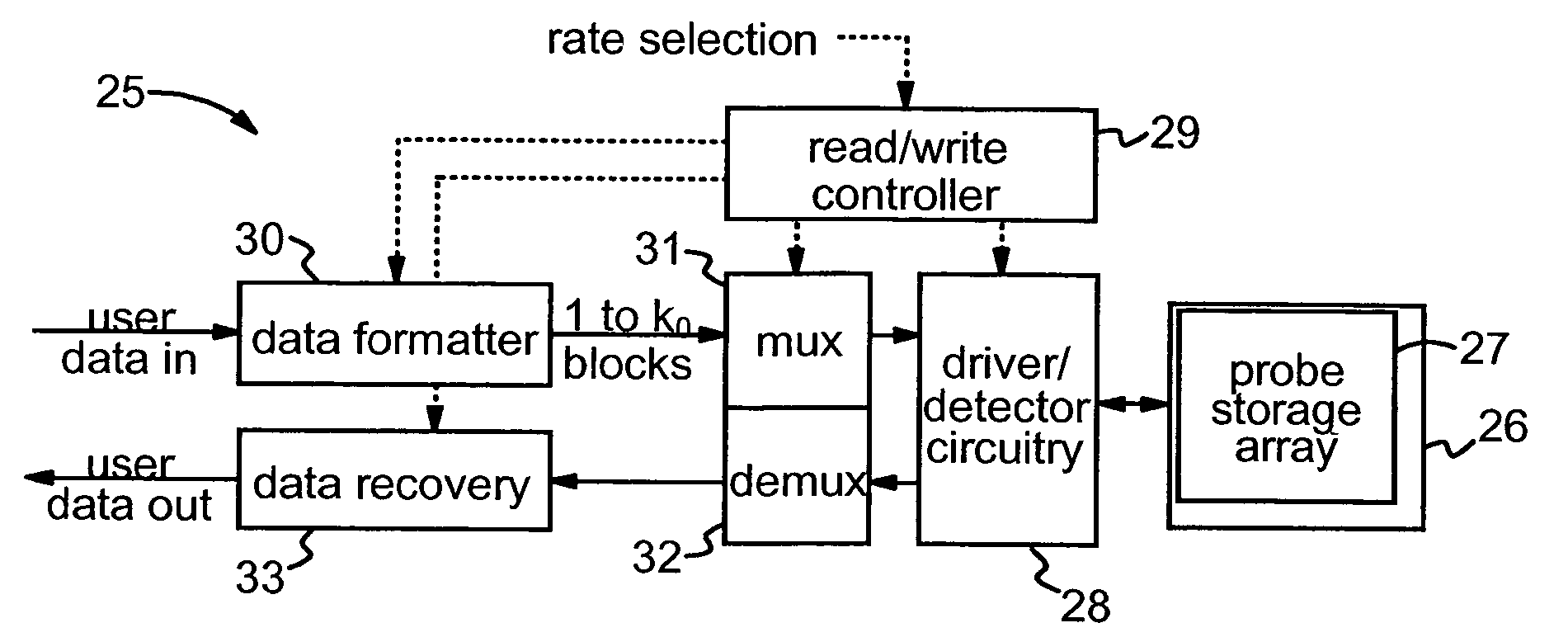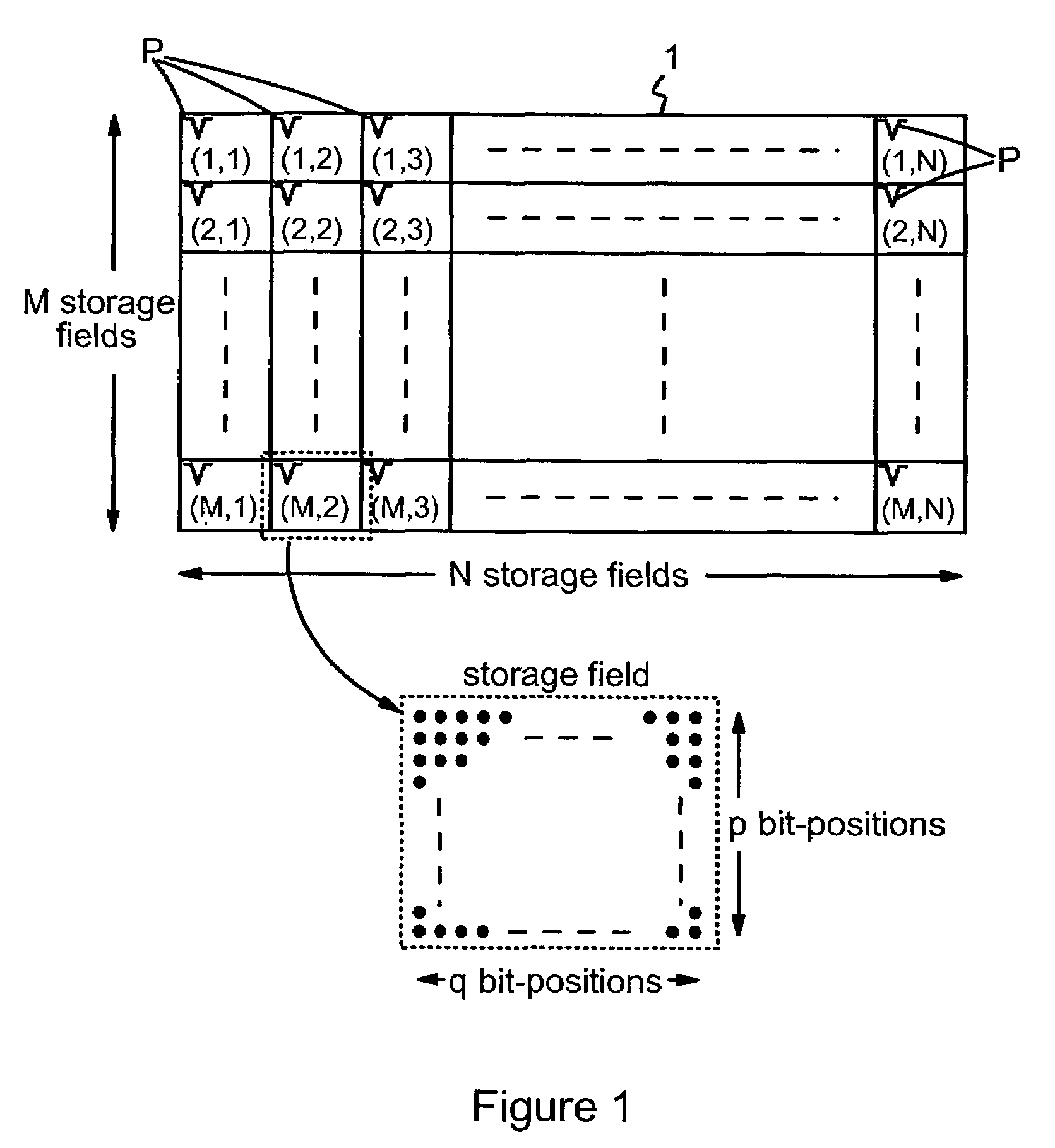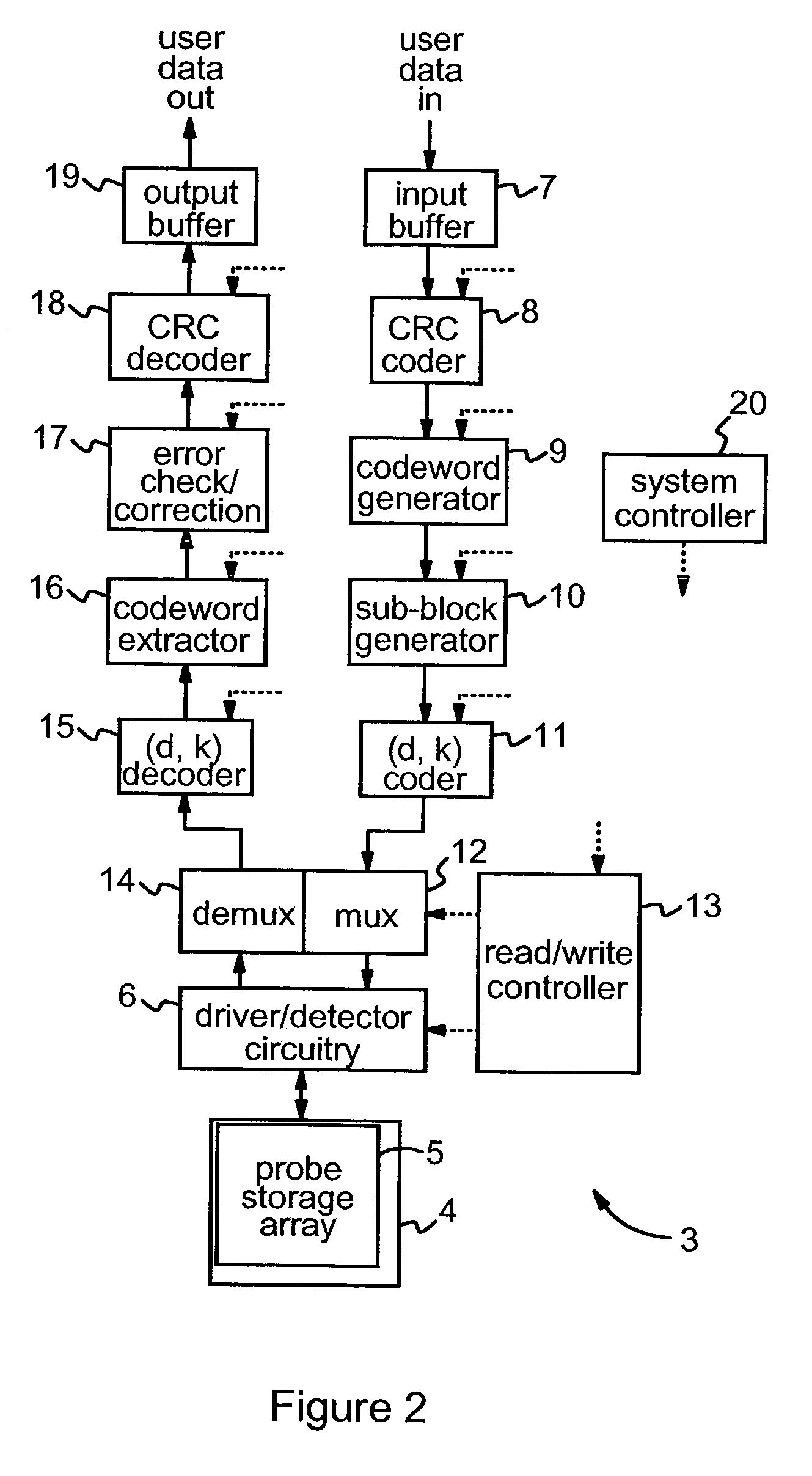Writing and reading of data in probe-based data storage devices
a data storage device and probe-based technology, applied in the direction of digital signal error detection/correction, coding, instruments, etc., can solve the problems of variable types of errors that can be encountered in the probe-based storage device, and achieve the effect of reducing the likelihood of errors preventing the correct recovery of codewords, minimizing the number of bytes, and maximal byte spacing
- Summary
- Abstract
- Description
- Claims
- Application Information
AI Technical Summary
Benefits of technology
Problems solved by technology
Method used
Image
Examples
example 1
[0070]Physical array size A=4096 storage fields; user block size=576 bytes; r=4; Ad=512 storage fields; As=16 storage fields; k0=512 / 16=32; k1=576 / 16=36; and k2=4096 / 512=8.
example 2
[0071]Physical array size A=4096 storage fields; user block size=576 bytes; r=4; Ad=512 storage fields; As=32 storage fields; k0=512 / 32=16; k1=576 / 32=18; and k2=4096 / 512=8.
example 3
[0072]Physical array size A=4096 storage fields; user block size=4096 bytes; r=16; Ad=512 storage fields; As=32 storage fields; k0=512 / 32=16; k1=4096 / 32=128; and k2=4096 / 512=8.
[0073]It will be appreciated that the read / write control systems of embodiments of the invention can support various host interfaces for probe-based storage devices having various array and storage field sizes, and provide tolerance to various types of errors. Independent write and read rates, as well as variations in these rates, are supported. Embodiments of the invention can be employed with any probe-storage array, regardless of the particular probe technology and array addressing scheme employed. It will of course be appreciated that, while preferred embodiments have been described in detail above, many changes and modifications can be made to the embodiments described without departing from the scope of the invention.
PUM
 Login to View More
Login to View More Abstract
Description
Claims
Application Information
 Login to View More
Login to View More - R&D
- Intellectual Property
- Life Sciences
- Materials
- Tech Scout
- Unparalleled Data Quality
- Higher Quality Content
- 60% Fewer Hallucinations
Browse by: Latest US Patents, China's latest patents, Technical Efficacy Thesaurus, Application Domain, Technology Topic, Popular Technical Reports.
© 2025 PatSnap. All rights reserved.Legal|Privacy policy|Modern Slavery Act Transparency Statement|Sitemap|About US| Contact US: help@patsnap.com



